The 31 December 2024 deadline is approaching but local authorities are struggling to implement these articles in the absence of implementation guidelines from the Ministry of Resources and Environment (MONRE).
In 2022-2023, IUCN in cooperation with the Packaging Recycling Organisation Vietnam (PRO Vietnam), which brings together most of the major national and international food and beverage companies in Viet Nam, decided to pilot volume-based waste fees in Hoi An, one of Viet Nam’s top tourist destinations located in Quang Nam Province.
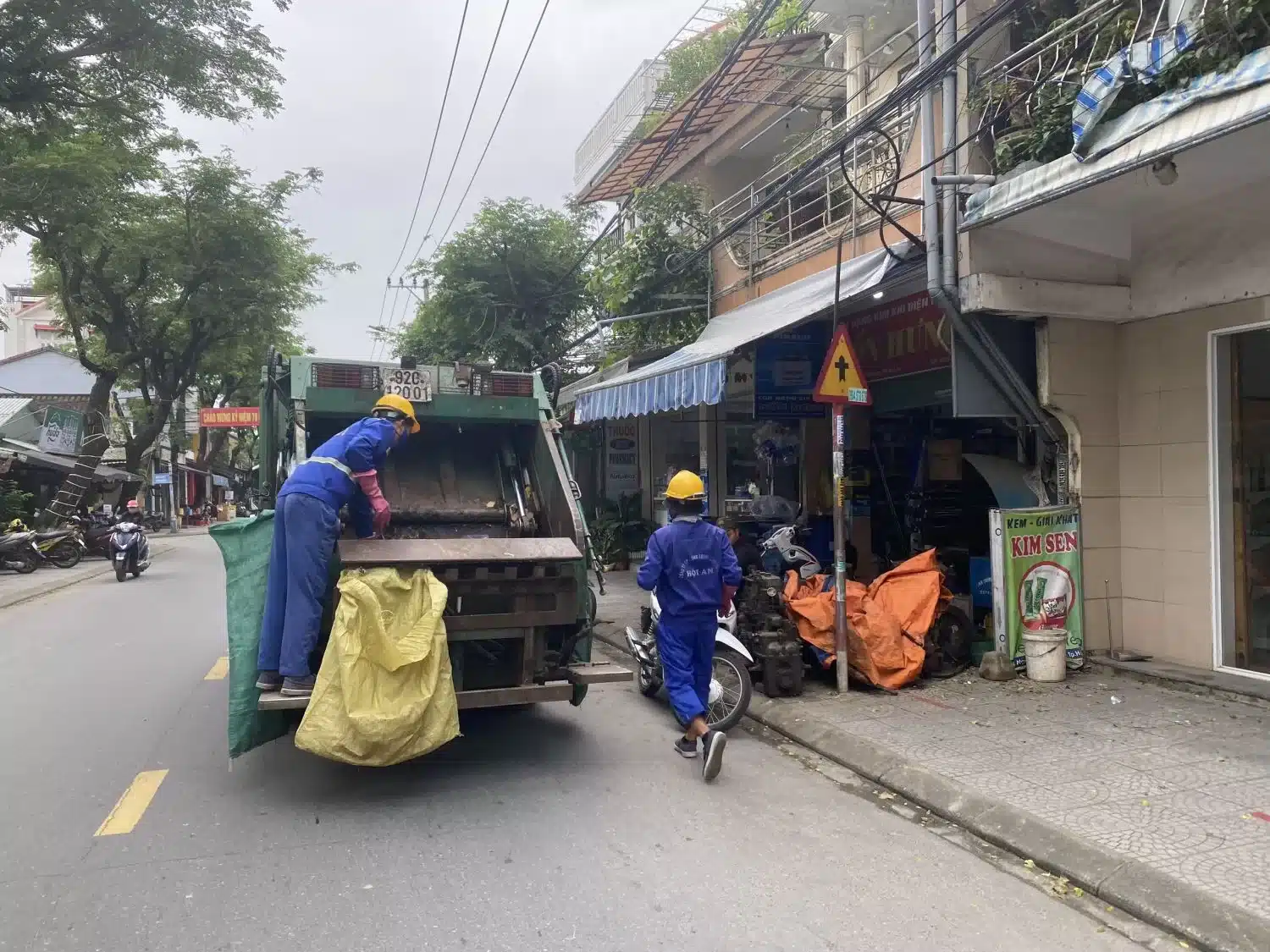
In June 2022, Quang Nam Provincial People’s Committee (PPC) approved the pilot in principle. In April 2023, Hoi An City People’s Committee (CPC) issued plan No. 947/KH-UBND, which allowed IUCN and Building Up Sustainability (BUS), a local NGO, to start the pilot in Cam Nam Ward in Hoi An. Nowhere in Viet Nam has yet tested volume-based fees for domestic solid waste so this pilot is of national significance.
In most cities, households are charged a flat waste collection fee of 25,000-30,000 Viet Nam Dong (VND)/household. This is a problem for two reasons. First, since the fee is flat, there is no incentive for households to reduce waste, and second, the fee is too low to cover the waste management costs, let alone investment in more advanced waste treatment.
Nationally, 70% to 90% of the cost of solid waste management is provided as a government subsidy to state-owned companies, so households pay a very small portion of the actual cost. Modernising Viet Nam’s solid waste management system will require major investment, most of which will have to come from increased user fees. According to a 2018 World Bank study, waste collection fees in Hanoi need to rise to 250,000 VND/household/month to finance a moderately efficient solid waste management system.
Cam Nam Ward was selected as the pilot site for several reasons. It has high domestic solid waste separation rates, enjoys strong political support, is unaffected by solid waste leakage from surrounding areas as it is separated from the city by a 200 meter bridge, has adequate waste collection infrastructure, and many households are involved in composting and recycling.
The pilot is conducted in two phases. Phase 1, which ran from April to August 2023, covered 450 households but only 187 households agreed to join. The graph shows how the number of participating households increased rapidly after extensive communication and consultation by BUS and local government. Phase 2 will cover all 1,600 households in Cam Nam.
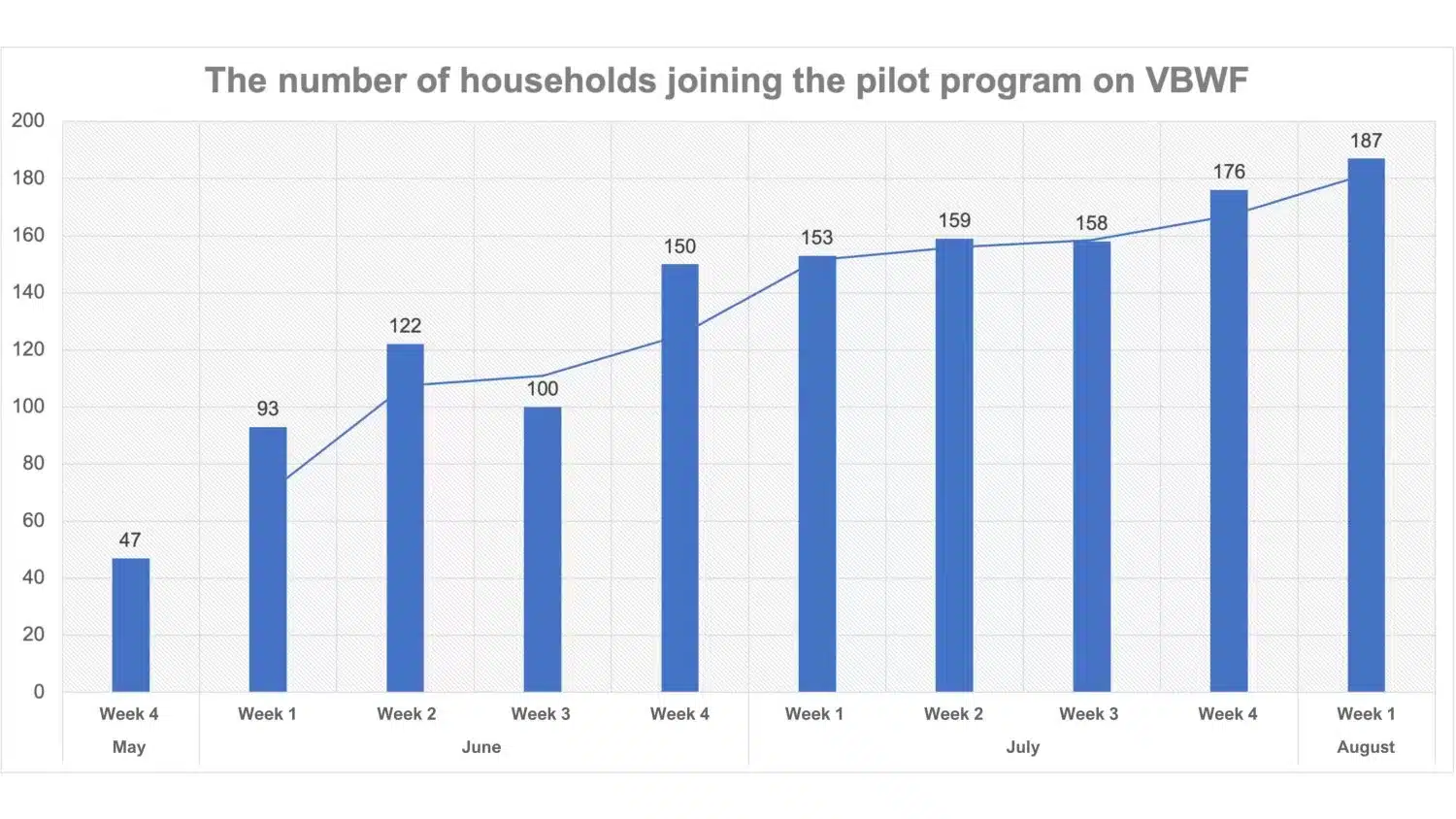
The purpose of phase 1 was to calculate solid waste volume and weight per household, to decide on the use of bags or drums to collect trash and set an appropriate volume-based fee. This was accomplished in three steps, as shown in the infographic below.
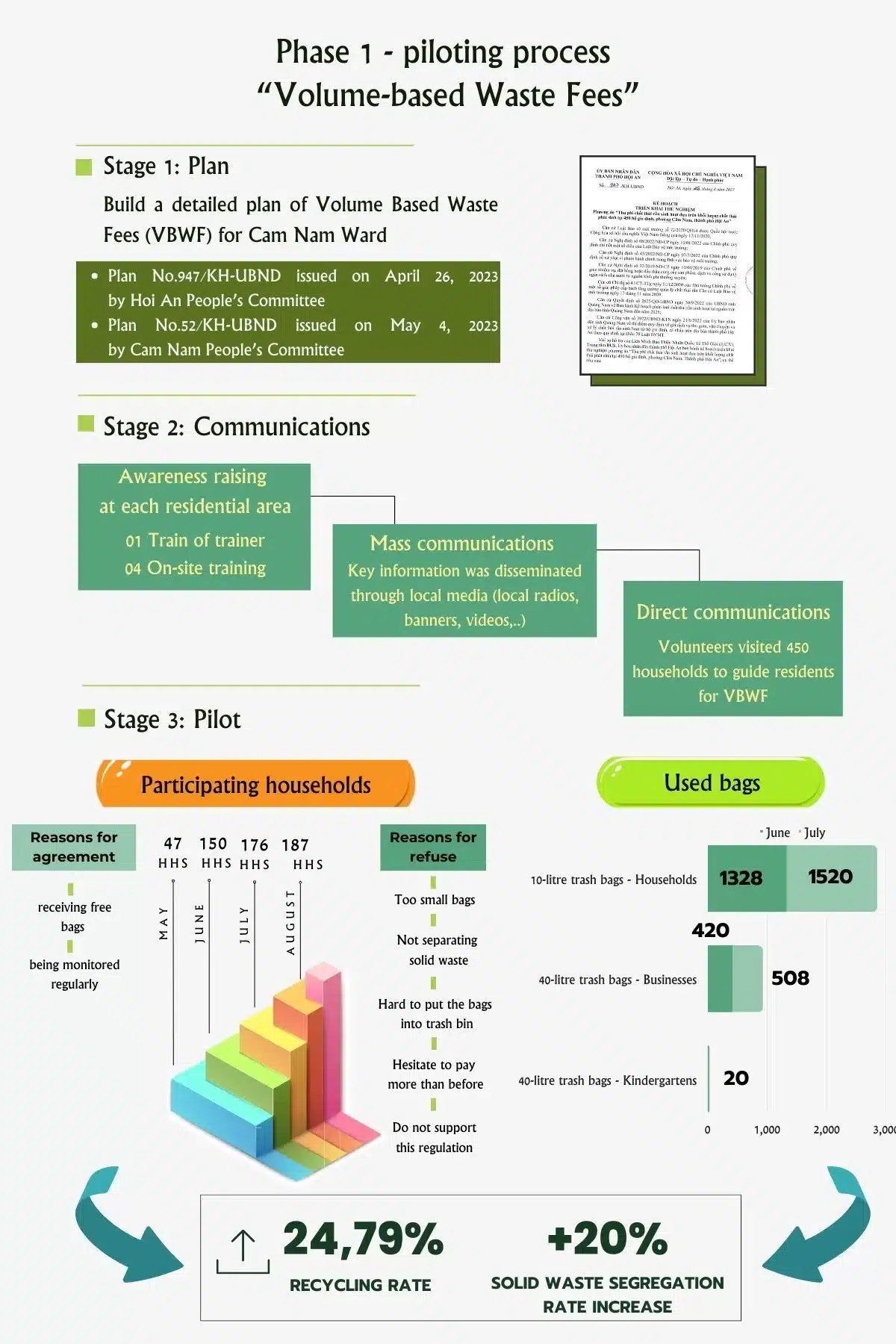
Hoi An CPC provided participating households with 5-, 10-, 15-, 20-, and 40-liter plastic bags for food and non-recyclable waste for free. See photo. Hoi An Public Works company collects this waste four times/week. The third category of waste, recyclable non-organic such as bottles and cans, was transferred by some households to designated Material Recycling Facilities collection points or 54 “Ngoi Nha Xanh” (recycling houses) that specialize in waste separation. Other households sell their recyclable non-organic waste directly to waste pickers.

In phase 1, each household received free of charge 16 trash bags/month, worth 30,000 VND/month, equivalent to the flat fee. The infographic below shows how many bags of different sizes each household can receive for 30,000 VND. Households will eventually have to pay for these bags based on the cost of the bags, the collection and transportation costs, plus the waste volume. If households separate waste well, they will use fewer bags and pay a lower fee.
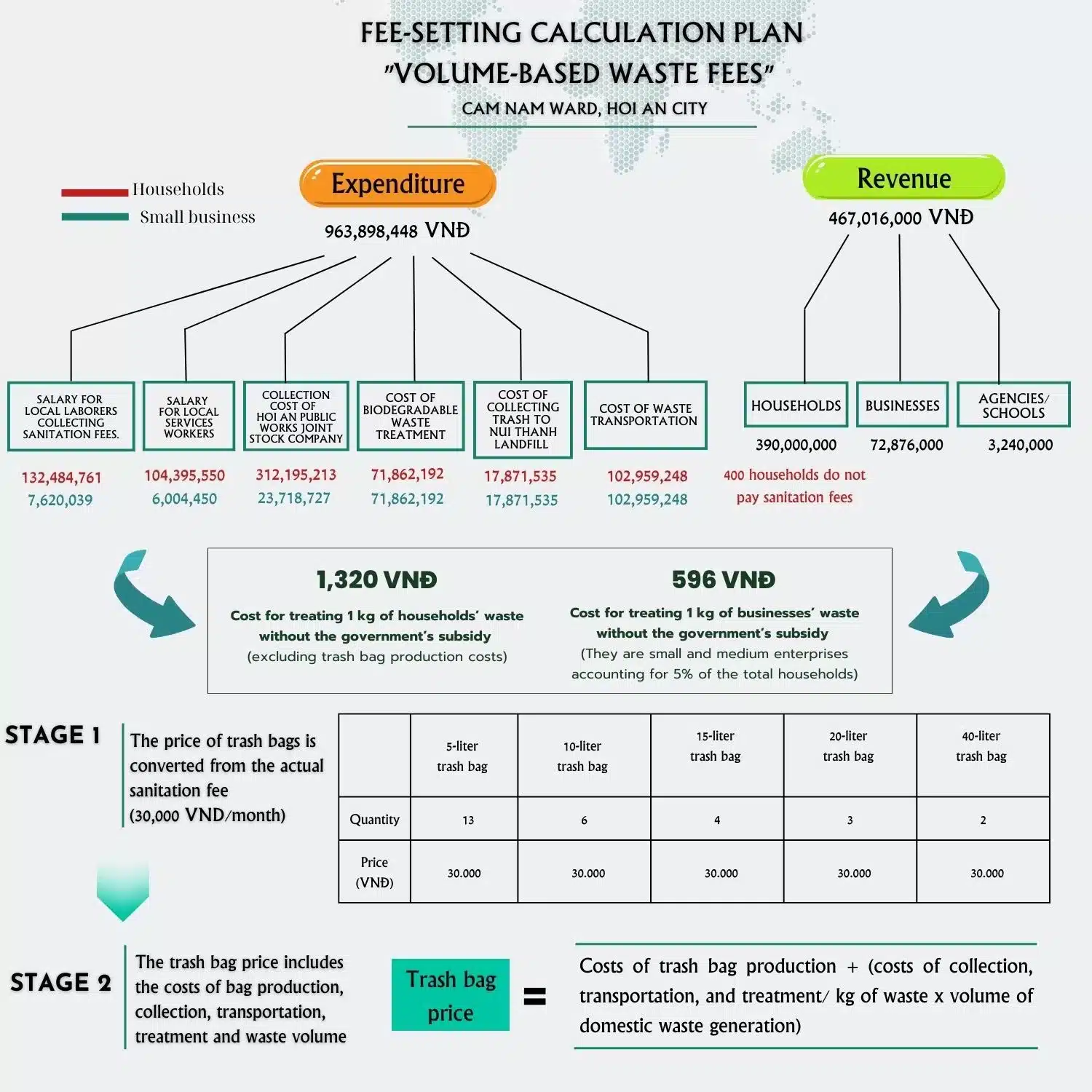
Phase 1 included the establishment of community monitoring groups to monitor the level of waste separation by households, which included accompanying Hoi An Public Works on their waste collection rounds starting at 5AM, and to promote compliance.
By the end of phase 1, the amount of non-organic recyclable waste from the 187 participating households increased by 25% vs. 2022 (see first infographic). The proportion of these households separating waste increased from 46% in 2022 to 66% in 2023. One-third of participating households therefore did not separate their waste. This relatively low level of compliance reflects the voluntary nature of the pilot.
On 30 August 2023, IUCN organised a meeting to review phase 1 of the pilot. Nguyen The Hung, Vice-Chairman of Hoi An CPC, recognised the pioneering efforts of Cam Nam and recommended that the pilot be scaled up. The same day, the CPC issued Decision 1154/QĐ-UBND allocating 308 million VND from the provincial budget to pilot volume-based fees in all of Cam Nam Ward.
Recommendations and lessons learned from the pilot include:
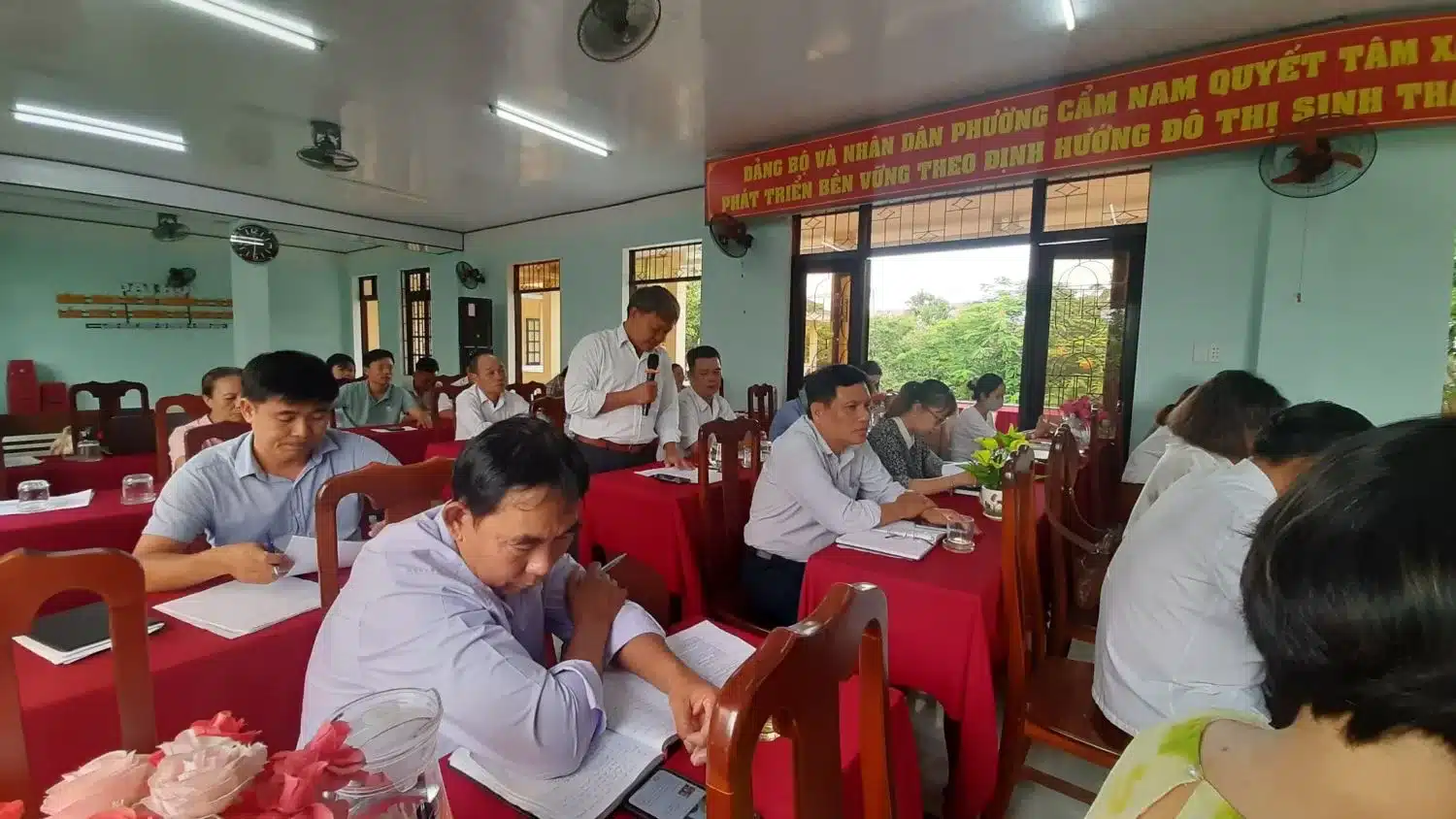
Photo: A member of community monitoring group discussed at the review meeting © IUCN Viet Nam
At the meeting, Bui Thi Thu Hien, IUCN Marine & Coastal Coordinator emphasised that with the entry into effect of the LEP, waste separation at source and volume-based fees are no longer “nice to do” but “must do”; that the successful implementation of volume-based fees depends on effective waste separate at source; that community monitoring plays a key role in increasing participation and compliance; that Hoi An Public Works has taken on significant new responsibilities in collecting, sorting, and treating waste according to the LEP; and that success will require continued political support from local government.
Next steps are to scale up the pilot to all 1,600 households in Cam Nam starting September 2023; produce larger trash bags; and households will start paying for their trash bags (up to a ceiling of 30,000 VND/month).
Depending on the results of the pilot, Hoi An CPC will submit a proposal to Quang Nam PPC to pilot volume-based fees across all of Hoi An starting in January 2024.